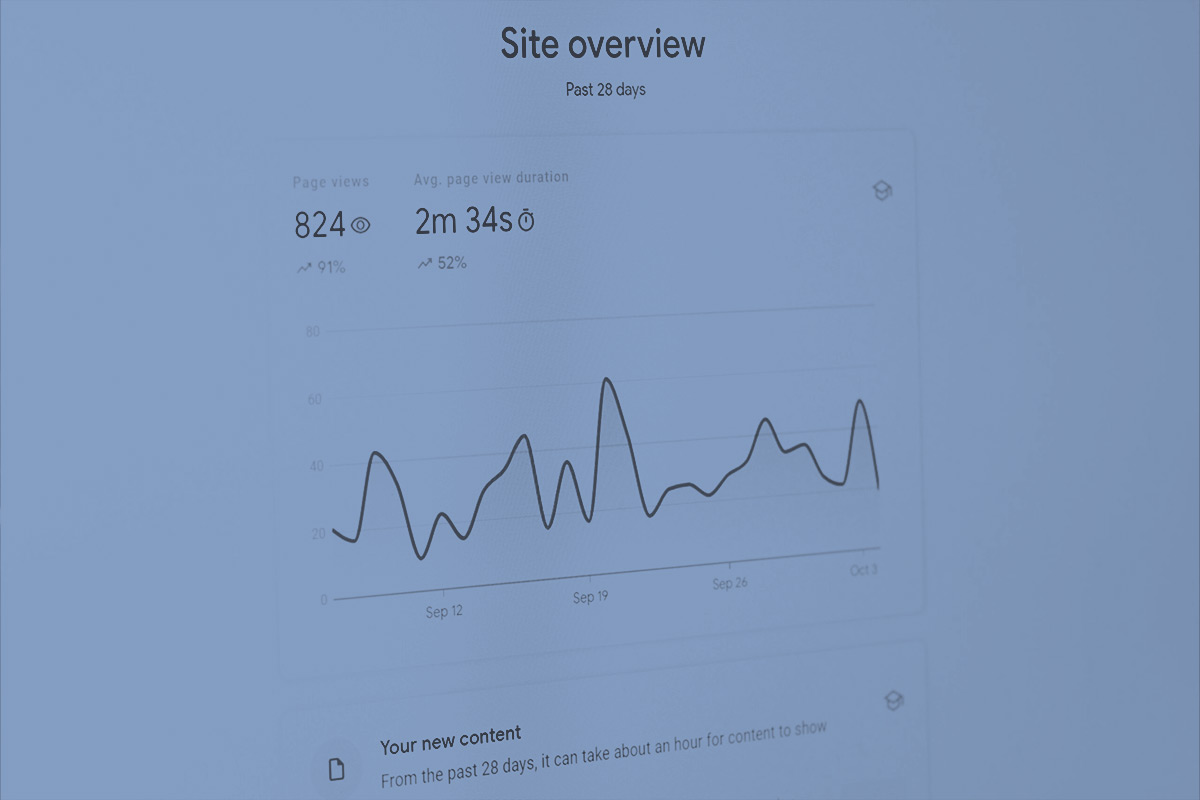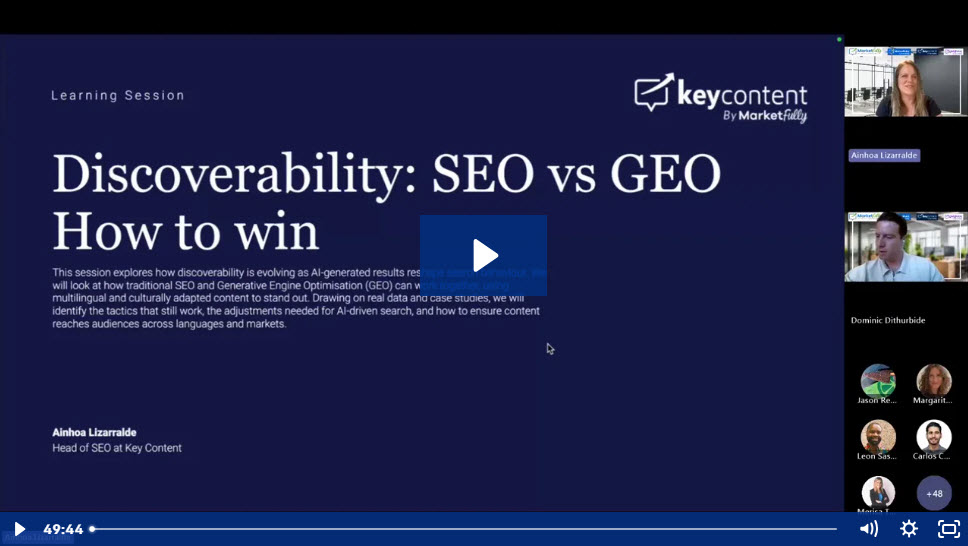Original content gives clear value to brands because it draws on real expertise and insight, as opposed to content that’s merely technically unique, like the output from a language model or a lightly rewritten article, which lacks that human touch.
Many analysts note that AI-generated drafts often lack depth, originality, and emotional nuance unless they’re carefully edited. Google itself emphasises “people-first” content that adds real value, so, pages that only change wording without offering new information generally fail to engage users.
In-the-know audiences and search engines tend to skip material that feels formulaic or shallow, with some marketers calling it “GPT-blindness.”
At the end of the day, only truly original, expert-driven content, like the kind infused with first-hand knowledge, will stand out and drive measurable results.

Matching content workflows to customer needs
Key Content scales original content by applying a content triage approach, which means choosing the most efficient workflow for each project rather than always starting from scratch.
As an example, a technical manual might need translation into another language, a product guide might require localisation (adjusting tone and examples) for each market, a brand marketing page might undergo full transcreation (rewriting for local storytelling), and a high-profile or complex topic might need new expert-led creation (fresh research and writing).
This triage approach keeps the quality and efficiency high, and makes the content fit for its specific purpose. For instance, a safety manual in English can be translated directly into German, while a local ad campaign might need to be completely rewritten for cultural relevance.
We then let SEO data and performance signals guide our workflow choices. If a page is ranking but not converting, or a topic has high search volume but low competition, or users are bouncing off a shallow page, we flag the need for deeper expertise. These data-driven questions tell us exactly where to involve subject experts and where a standard process works just as well.
What we aim to do is save our experts’ time for the content that will move the needle, while handling more routine material through translation or simple localisation.
Data-driven strategy, KPIs, and Tools
Every content decision at Key Content is backed up by analytics, and we regularly measure a range of SEO and engagement metrics to prioritise our workload.

Some of the Core KPIs include:
- Organic traffic: The total monthly visits from search engines. If there’s a rising trend here, it shows that the content is reaching more people.
- Keyword rankings: Positions of target search terms. Tracking rank changes can tell you how your visibility shifts after you update content.
- Engagement: How long and how in-depth visitors engage with your content. A very high bounce rate on an informational page can indicate missing information, unless the session duration is also high. These must be interpreted in context.
- Conversion rate: The percentage of organic visitors completing desired actions (form fills, signups, purchases). Conversion tracking is crucial for tying your content work to your revenue.
- Content depth/quality: An assessment of whether content fully satisfies the query. We track this via metrics like time on page and user feedback, and by comparing our content’s coverage against top-ranked competitors.
- Backlinks (referring domains): The number of unique external sites linking to a page. An upward trend in referring domains correlates with higher authority and traffic.
We gather these metrics with tools like Google Search Console (impressions, click-throughs, positions), Google Analytics 4 (traffic sources, user flows, conversions), and SEO platforms (Semrush, Ahrefs) for keyword and link data. We also use technical SEO audits (e.g. Screaming Frog) to fix issues that can affect these KPIs, including broken links, missing meta tags, or slow page speed.
When we compare each page’s actual performance against its opportunity, we identify underperformers, and that gap analysis drives our next steps. We might rewrite content, optimise targeting, or build links according to what’s needed. It is key to benchmark against competitors to make sure our content meets or exceeds the detail on top-ranking pages.
We keep ourselves on track by regularly reporting on these KPIs. For example, we monitor GSC data to detect rising query trends or sudden traffic drops, and we use GA4 to see how changes (like A/B tests or localisation) affect conversions.
Regional analytics are something else we place emphasis on, by checking traffic by country to spot markets where a page isn’t reaching an audience, prompting us to add a translation or localise it. Together, these insights allow us to continuously optimise our content strategy.

Building trust and authority with SMEs and E‑E‑A‑T
Search engines explicitly reward content that shows Experience, Expertise, Authority, and Trust (E‑E‑A‑T). Google’s guidelines stress first-hand knowledge, like a review by someone who has direct experience, is considered far more credible than one by someone who hasn’t.
Subject matter experts (SMEs) are central to our process because of this.
When SMEs write or review content, they inject real-world knowledge, precise data, and nuanced examples into the content, which immediately raises the quality bar.
SME involvement leads to clearer answers and richer insights, which helps to earn higher page authority and more backlinks.
As an example, in a hotel content experiment, pages written by travel experts achieved roughly +150% higher authority and attracted +1,000% more organic traffic (and +219% more backlinks) than similar pages written by generic SEO writers.
This aligns with the broader trend of content that highlights true expertise tending to attract links and trust signals. By embedding E‑E‑A‑T cues like author credentials, case studies, or proprietary data into every piece, we can make sure each page meets Google’s trust criteria.
Beyond SEO, this expert-driven content often converts better because clear authority can shorten customer decision cycles and improve your conversion rates.

Key performance indicators in practice
The proof is in the numbers. For example:
- Travel Blog (Informational): We performed a gap analysis across six languages to find topics with search demand. We prioritised an article on “cheap paradise islands”, and within six months, that page’s organic traffic grew from 0 to 5,300 visits per month and it ranked for over 500 keywords. The combined monthly search volume of those keywords (\~175,000) highlights the strategic impact of choosing the right topic.
- Hotel Guides (SME vs. SEO Writer): We split content creation into two batches. One batch was written by travel SMEs and another by professional SEO writers. The SME-authored guides (with insider tips and examples) far outperformed the SEO-only versions, driving roughly +150% higher authority, +1,000% more organic traffic, and +219% more backlinks.
- Last-Minute Holiday Pages (Localisation): We optimised transactional landing pages for 12 markets by adapting keywords, CTAs, and copy to local intent. In the UK, a “last-minute holidays” page saw +217% traffic uplift and an Australian deals page saw +243% lift, all in a matter of months.
- Homepage Refresh (Technical & Content): A global brand’s homepage suffered from canonical and metadata issues. We fixed the setup, rewrote titles and descriptions for clarity, and improved internal linking. The result was that the homepage sessions jumped from 1,263 to 2,608 in four weeks, more than doubling traffic at the top of the funnel.
These cases show the measurable business impact of original, expert content as opposed to generic content. In each example, our KPI-driven strategy moved the needle with search rankings climbing, organic traffic surging, engagement deepening, and conversions improving. Importantly, tracking conversion rates was one of the key metrics, as one SEO authority notes, conversion tracking is “the one everyone agrees with on its utmost importance”
Investing in original, SME-driven content and rigorously measuring it with clear SEO metrics is how you turn your content into a true growth engine.
By combining smart triage, real expertise, and data-focused optimisation, brands get content that shines creatively while also delivering a concrete ROI. For CMOs and marketing leaders, this means that content strategy can be justified with hard numbers like higher traffic, better rankings, more leads, and lower acquisition costs.
In the end, the data speaks for itself. Original, high-quality content gives us superior SEO performance and business outcomes.





